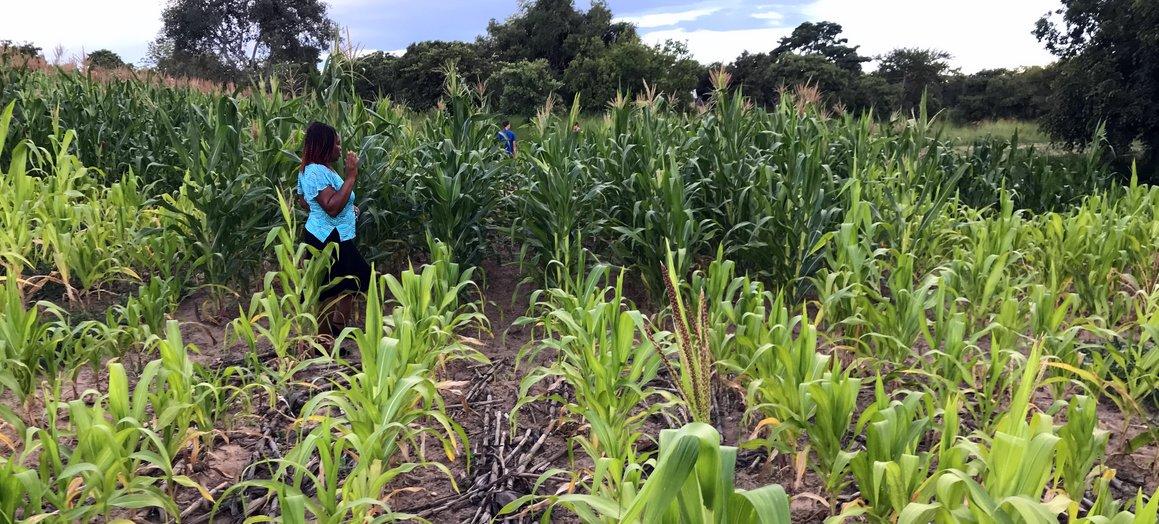Recording available in the link above
Sustainable Agri-Food Systems Intelligence – Science-Policy Interface (SASi-SPi) is a 5-year € 11.5 million project with the overall objective to contribute to the economic, social, and environmental sustainability of Aquatic and Agri-Food Systems in Africa, Asia, Latin America and the Caribbean.
This InfoPoint Conference will gather researchers, policy-makers, agri-food systems actors and look from a new perspective at the role of fertilizers in increasing agricultural productivity in sub-Saharan Africa:
The challenges assessed in SASi-SPi research are prompting Africa to envision its own pathway for sustainable agri-food system development. African policymakers are undeniably grappling with these immense challenges as they determine the types of intensification suited to each context and explore diverse strategies to feed a growing population better. African policymakers also weigh the short and long-term trade-offs of agri-food systems while addressing their impacts on sustainability.
The Agrinatura-led SASi-SPi will share preliminary findings of an ongoing study that uses a systemic approach to look at the fertilizers and soil health topics, with a focus on the following issues:
- While integrating agroecological approaches with synthetic inputs is essential, the optimal combination of fertilizer use and agroecological practices depends on local soil conditions. Agroecological practices are all the more necessary as the soil is degraded.
- The average productivity of fertilizer is greater in Africa than in the rest of the world. Some rebalancing would probably also yield aggregate environmental benefits.
- The key driver for increased and sustained productivity is the effective demand for food and its impact on crop profitability which ensures the incentives for farmers to invest in soil health and fertilizer.
This InfoPoint Conference will gather researchers, policy-makers, agri-food systems actors and look from a new perspective at the role of fertilizers in increasing agricultural productivity in sub-Saharan Africa:
- Why is their role in food security such a pressing and debated issue?
- What are the relevant agronomic, socio-economic, and policy challenges at stake?
- How do we deal with such challenges from a policy-making perspective?
- How evidence can be helpful to inform decision-making?
The challenges assessed in SASi-SPi research are prompting Africa to envision its own pathway for sustainable agri-food system development. African policymakers are undeniably grappling with these immense challenges as they determine the types of intensification suited to each context and explore diverse strategies to feed a growing population better. African policymakers also weigh the short and long-term trade-offs of agri-food systems while addressing their impacts on sustainability.
In this regard, SASi-SPi is developing an agri-food system approach where the often conflicting objectives, key sustainability issues and interactions of agri-food system components are considered.
Speakers
Speakers
- Leonard MIZZI, Head of Unit, INTPA F3, Sustainable agri-food systems and Fisheries
- Dr Tristan LE COTTY, Economist, CIRAD
- Christophe LAROSE, Head of Sector, INTPA F3, Sustainable agri-food systems and Fisheries
- Nuno Santos, Deputy Director (Business Development), FAO Investment Centre
- Dr Godfrey BAHIIGWA, Director of Agriculture and Rural Development, African Union Commission
- Marie-Claire KALIHANGABO, Coordinator, African Fertilizers Financing Mechanism, African Development Bank AFDB
- Dr Million BELAY, General Coordinator, African Food Sovereignty Alliance
Resource:
The article highlights five reasons why more mineral fertilizer is needed in sub-Saharan Africa:
- Farming systems are characterized by very low mineral fertilizer use, widespread mixed crop-livestock systems, and significant crop diversity, including legumes. Inputs of mineral elements to crops by farmers are insufficient, resulting in a widespread decline in soil fertility due to soil nutrient mining.
- The nitrogen requirements of crops cannot be met solely through biological nitrogen fixation by legumes and manure recycling. Legumes can only fix atmospheric nitrogen if symbiosis with soil bacteria functions correctly, which requires absorption of different mineral elements by the plant. Ken Giller of Wageningen University, highlights that the ability of legumes to capture nitrogen from the air through their symbiosis with rhizobium bacteria is a fantastic opportunity for smallholder farmers, “but the amounts on nitrogen fixed are very small unless other nutrients such as phosphorus are supplied through fertilizers”.
- Phosphorus and potassium are often the main limiting factors of the functioning of plants and living organisms, including symbiotic bacteria: if there is not enough phosphorus and potassium in soils, then there is no nitrogen fixation. These nutrient elements, phosphorus, potassium and micro-elements, need to be provided by fertilizers, since they cannot be provided by legumes, which draw these elements directly from the soil. In the case of manure, this is simply a transfer from grazing areas to cultivated areas, which gradually reduces fertility in grazing areas.
- If used appropriately, mineral fertilizers have little impact on the environment. The greenhouse gas emissions linked to nitrogen fertilizer use can be controlled through a balanced and efficient application. In addition, mineral fertilizers can be produced more efficiently in order to reduce the impact of their production on greenhouse gas emissions, keeping in mind that this impact is low, at around 1% of total anthropogenic emissions.
- Further reducing mineral fertilizer use in SSA would hamper productivity gains and would contribute directly to increasing food insecurity and indirectly to agricultural expansion and deforestation. Producing for a population that will double by 2050 is likely to require the use of more agricultural land. An extensive strategy thus harms biodiversity and contributes to increasing greenhouse gas emissions, contrary to an agroecological intensification strategy combined with efficient and moderate mineral fertilizer use.




No comments:
Post a Comment